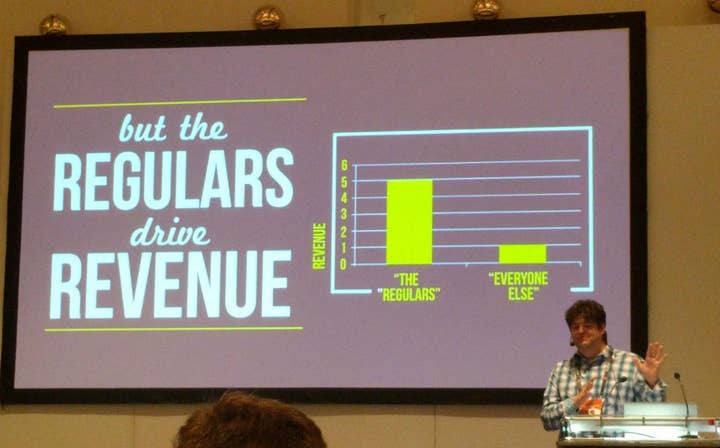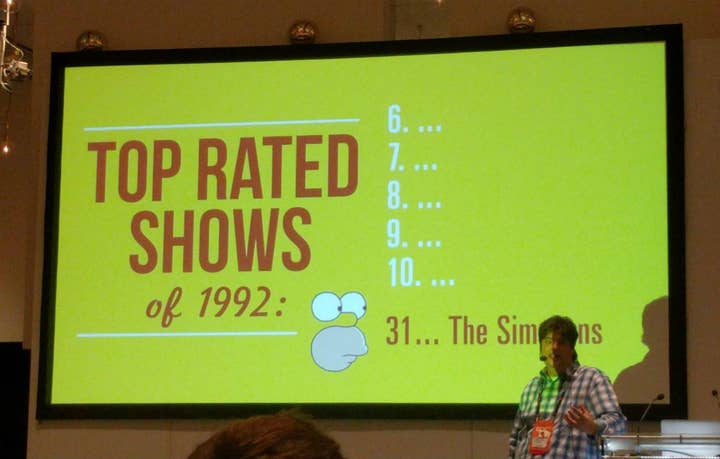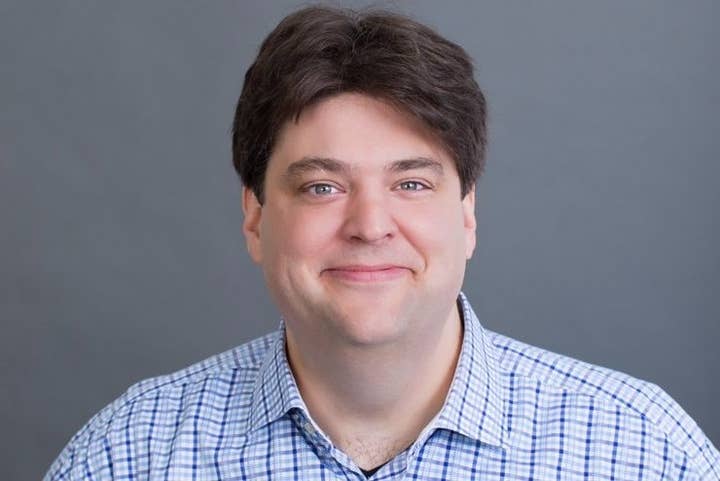Kabam: Look beyond whales, focus on your "regulars"
In seeking long-term success, Aaron Loeb believes mobile developers can learn from the long-term strategies found in television shows
The value of whales to free-to-play games needs to be reassessed, according to Aaron Loeb, with Kabam's president of studios pointing to long-running TV shows as a blueprint for building lasting success in the mobile market.
In a fascinating talk at GDC Europe earlier this week, Loeb exposed many of the ways in which mobile game companies are still given to short-term thinking. The widespread use of metrics like Day 1 retention, Day 30 retention and average revenue per user are all example of this tendency, offering a narrow perspective on products that, at their best, could last for years - and perhaps decades.
With console and premium games, Loeb said, there were clear similarities to the "event based entertainment" created by the film industry: the cost of production and marketing are largely upfront, with the vast majority of revenue arriving quickly after launch. With free-to-play and mobile games, though, a better comparison in terms of both business and craft is television, where even popular and enduring shows don't show a significant return on investment for three years.
"It's clear to us without analysis that not all players are created equal"
"Developers who focus on trying to make a big hit on the first weekend; there are games that come out on mobile, they climb up the charts, and then they fall right back off," Loeb said. "The developers who really make it work are figuring out how to make a game that makes [players] keep coming back, engaging an audience, for years and years and years on end."
However, "event based entertainment" thinking still exists in mobile, with Loeb showing a slide of MZ's Mobile Strike ad campaign, which starred Arnold Schwarzenegger, as an example. "You've gotta have a lot of confidence to be able to do this," he said, "and increasingly, my takeaway is that if you're trying to launch an original IP in mobile today, you're going to need to spend about $20 million to $30 million on marketing to get people to be aware of it.
"You're going to have to launch it with this huge groundswell of support. Or you're going to have to get lucky to some degree, because the market is so crowded."
For those without MZ's resources, though, the alterantive strategy is to prepare for the long-game; the kind of multi-year strategies that have been common practice in the TV industry. On the practical side, this means treating a launch product like the pilot episode of a TV series: an "incomplete thought," to use Loeb's description, with as many as 15 or 20 elements that can grow, change or be killed off over time. It also means keeping a pre-launch team as small as possible, and reserving the majority of your production budget for after launch - the cost of actually making the launch version should be "a fraction" of the total available, he said.
"Something I've often said to teams that are ready to launch a game, and when I'm looking at a studio that wants to get funded: You don't have to be afraid of failure; you've got to be afraid of success."
The most intriguing aspect of Loeb's talk, however, is how that kind of thinking alters the way you build, understand and serve a game's audience. In TV, he said, a typical marketing push starts with, "very small campaigns targeting primary influencers. The people they think will get everybody else to watch the show." This is based on the idea that grassroots enthusiasm will bring in better quality users given enough time. Loeb cited Mr Robot's second season premiere, which exceeded the viewing figures of any episode from its first season, as an example of this technique working
"We don't look at our players through the lens of who spends the most any more."
"In almost every free-to-play game, if you dig into the analysis, the first month of installs you get for that game, generally the KPIs for that month are better than anything you see ever again," Loeb continued. "And that's because it's these tastemakers, these influencers who are ultimately responsible for the game growing over time. They all come together in a concentrated group. This happens in TV, too - this exact same thing."
For the most part, Loeb said, the free-to-play audience has been understood using data points like ARPU, Day 1 retention and Day 30 retention, dividing it into, "people who are playing, people who've stopped playing, people who've given us money." The TV industry analysed its audience in this way - "you either watch or you don't" - for a long time, but that understanding evolved into a concept called, "the demo."
"The people in the audience who are most important, the people you most advertise to," Loeb said. "So what is 'the demo' in our world, because it's clear to us without analysis that not all players are created equal. In any game where engagement and spending are uncapped...there becomes a distinction between people who do something all the time, and people who don't. In every single one of our games, ever, we've come to the realisation that all free-to-play games are really driven by these people who play them all the time."

Crucially, this is not strictly "whales," but a much larger and more diverse category of player that, Loeb said, represents about 20% of players on any one of Kabam's products. He compared this group to the regulars in a given bar, who may only drink a few beers every night, versus an investment banker who only stops in every couple of weeks to buy Cristal champagne. When you optimise around your top spenders, Loeb said, "you get yourself in a terrible position where you've screwed yourself, essentially... There's so many ways you can blow yourself up when you do that."
Indeed, Kabam has found that a significant number of high level spenders, "really don't like the game very much. That's sort of shocking to say, but there's people that will spend a bunch of money, and spend it very quickly, and they don't like it very much. But there's a much larger percentage of players, who don't spend as much, but who really like the game. They keep playing and playing and playing, and over time they're going to end up spending more money. We don't look at our players through the lens of who spends the most any more. What you want to look at is who's most engaged.
"I am confident we'll be playing Clash of Clans in ten years"
"Your job then becomes spending to buy more of these people over time, through advertising, and building the game so that they keep engaged, they keep being excited and returning to the game. But also so they can turn other people into these highly engaged regulars. When you see a company like Kabam spending on user acquisition for Marvel: Contest of Champions 18 months after launch, it's because we're finding more and more of these people out in the marketplace."
As a parting shot, Loeb showed a slide of the five most watched TV shows in the US in 1992; a mix of memorable but now defunct series and a few I didn't even recognise. Way down at number 31, though, was The Simpsons, which is still going to this very day. "The Simpsons was not a hit from day one. It was not a hit from day two or even 100, but by building a show that had the right audience, and then continued to reach that audience, day in and day out, for years on end, they created content that lived for a long, long time.
"I am confident we'll be playing Clash of Clans in ten years... A game like Clash of Clans clearly has incredible numbers of regulars, and those regulars are not going anywhere for a very, very long time. If they leave at 0.5% every month, that's a lot of months before that audience is gone - and Supercell can still acquire new players. And, by the way, the old ones can come back.
"The job we do in free-to-play, our highest aspiration should be to create something like that; something that doesn't just draw a huge amount of revenue and then goes away."


